Earth is home to 3 trillion trees, with around 73,000 species recognized — and thousands more yet to be discovered. In this adapted extract from “Remarkable Trees” (Thames and Hudson Ltd, 2024), authors Christina Harrison and Tony Kirkham look at three truly astonishing species, including one that can burn and blind humans who touch its sap.
Manchineel
Hippomane mancinella
A member of the spurge family (Euphorbiaceae), this species actually holds the record as the world’s most dangerous tree. The milky sap of the manchineel, which drips from any wounds in its trunk or branches, as with other spurges, contains strong irritants. It is so caustic that on contact with the skin, the sap will immediately cause blistering and burns, and can produce temporary blindness if it gets in the eyes. Even standing under this tree in the rain is dangerous, as drops contaminated by the sap can have the same effects.
Native to the tropical areas of southern North America (including Florida), the Caribbean, Central America and northern South America, this evergreen tree grows up to 50 feet (15 meters) tall. It is found along beaches and coastlines, where its roots help prevent erosion. The fruits resemble small green apples, but they are also highly toxic and the tree has many sinister common names including the Spanish arbol de la muerte or manzanilla de la muerte — tree or apple of death.
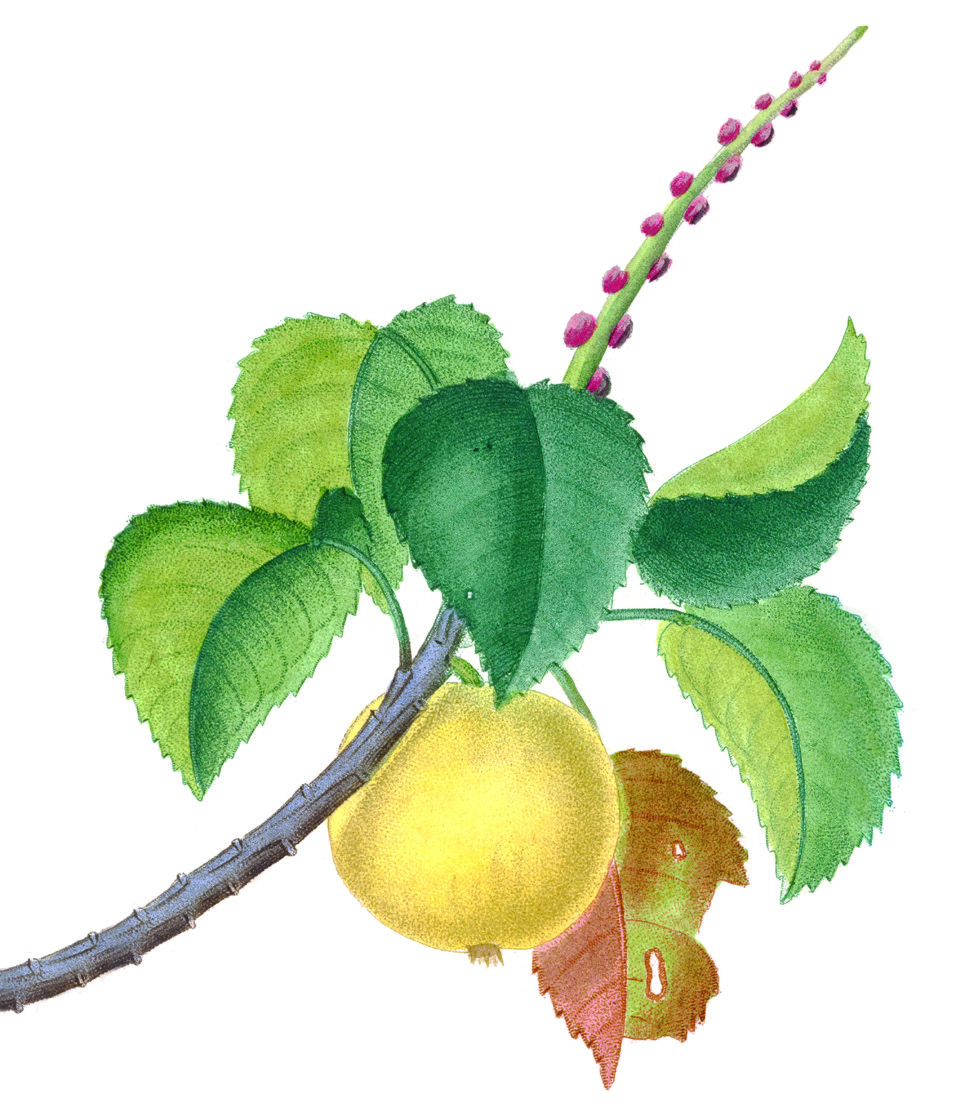
Said to taste quite sweet, the fruit’s flesh, if eaten, soon results in severe burning and ulceration of the mouth and throat, leading to excruciating pain. As all parts of the manchineel are toxic, local people will sometimes mark the trunk of a tree with a red X or a sign to warn of its presence. The wood is used, with care, in the making of furniture, but even burning it is dangerous as the smoke from the fire can still give rise to serious eye problems.
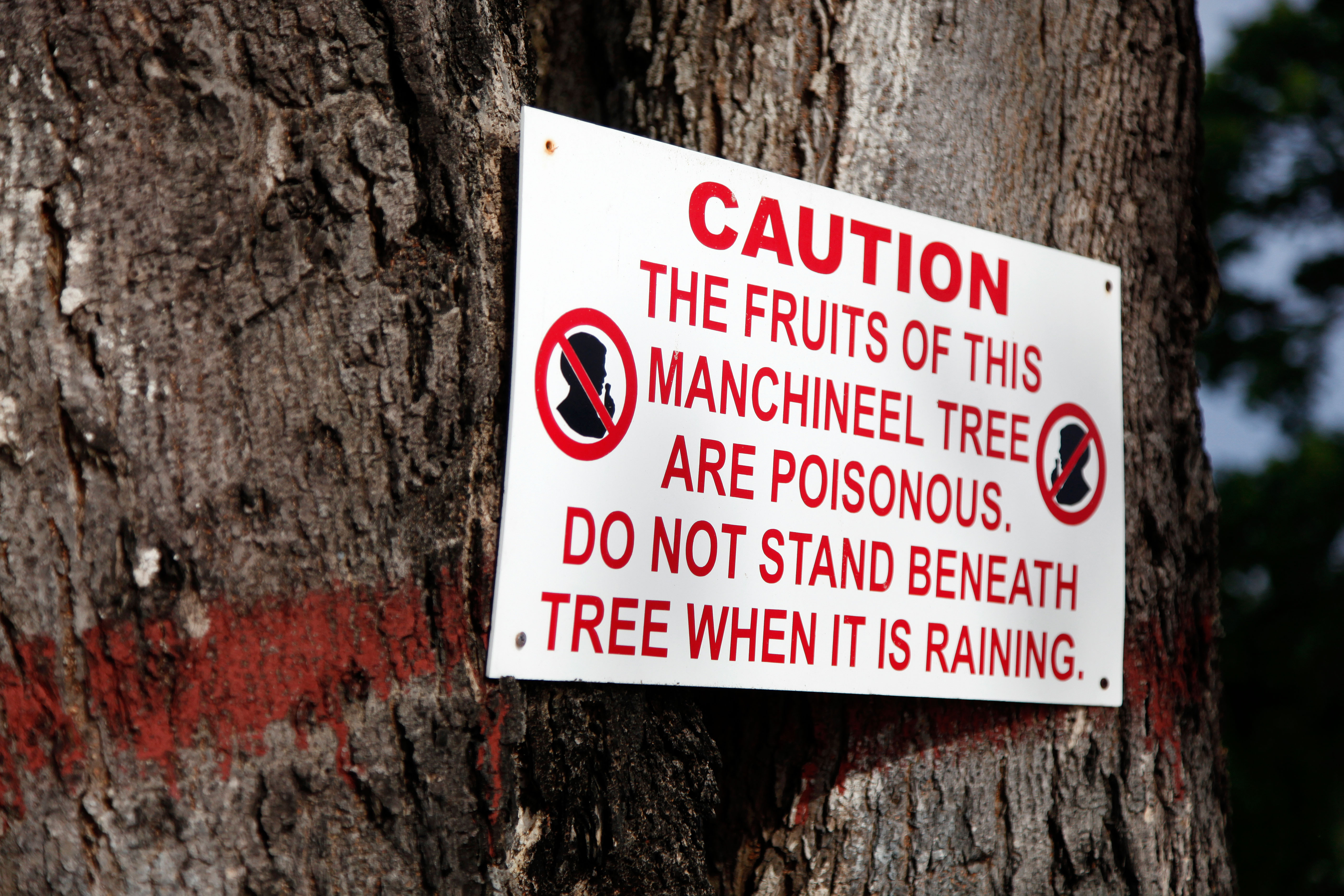
Encounters with this species are mentioned by several famous explorers. The 18th-century naturalist Mark Catesby recorded the agonies he suffered after the juice of the tree got into his eyes, and that he was “two days totally deprived of sight.” Manchineel’s notorious reputation has even spread into literature — references are found in “Madame Bovary” and “The Swiss Family Robinson,” among others, while it also appears in operas, including Giacomo Meyerbeer’s “L’Africaine,” where it is chosen as a means of suicide by the heroine Sélika.
Wollemi pine
Wollemia nobilis
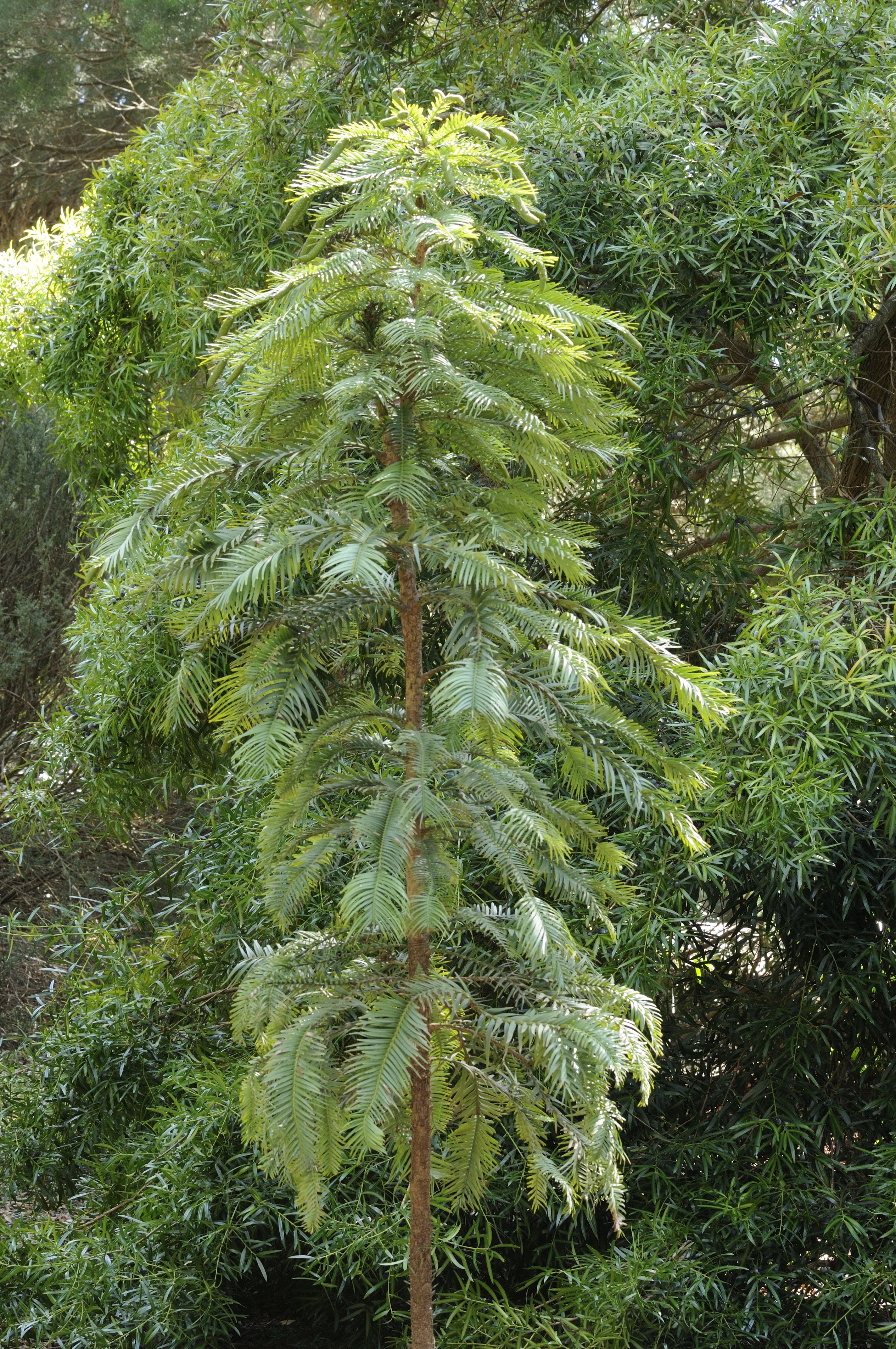
On Sept. 10 1994, David Noble of New South Wales National Parks was bushwalking alone in the remote and undisturbed steepsided sandstone gorges of the Wollemi National Park in the Blue Mountains, only about 90 miles (150 kilometers) northwest of Australia’s largest city, Sydney. He came across an unfamiliar, very unusual-looking tree that he had not seen before during his many hikes in these wild canyons. Having collected a small sample of foliage, he took it back to the Royal Botanic Gardens in Sydney to be identified by the garden’s taxonomists.
It was a dramatic discovery that would astound the plant world, as it was recognized as a new tree species unknown to science. The tree was later named Wollemia nobilis, the Wollemi pine. Wollemia, the genus, is named after the Wollemi National Park, with the Aboriginal word “wollemi” meaning “look around you, keep your eyes open and watch out”; the species name nobilis reflects both the tree’s qualities and its discoverer, David Noble.
Related: Mystery of ‘living fossil’ tree frozen in time for 66 million years finally solved
The Wollemi pine is not a true pine at all and is a member of the very primitive family Araucariaceae, which was once abundant in the world’s forests during the Jurassic and Cretaceous periods some 200 million to 65 million years ago. The other two genera represented in this family today are now mostly restricted to the southern hemisphere — the kauri, Agathis, and the monkey puzzle, Araucaria. The oldest known related fossil to the Wollemi pine dates from 90 million years ago and it had been presumed that the tree had become extinct some two million years ago. As it was only known from the fossil record before its dramatic reappearance in 1994, it is a “Lazarus” taxon or “living fossil.”
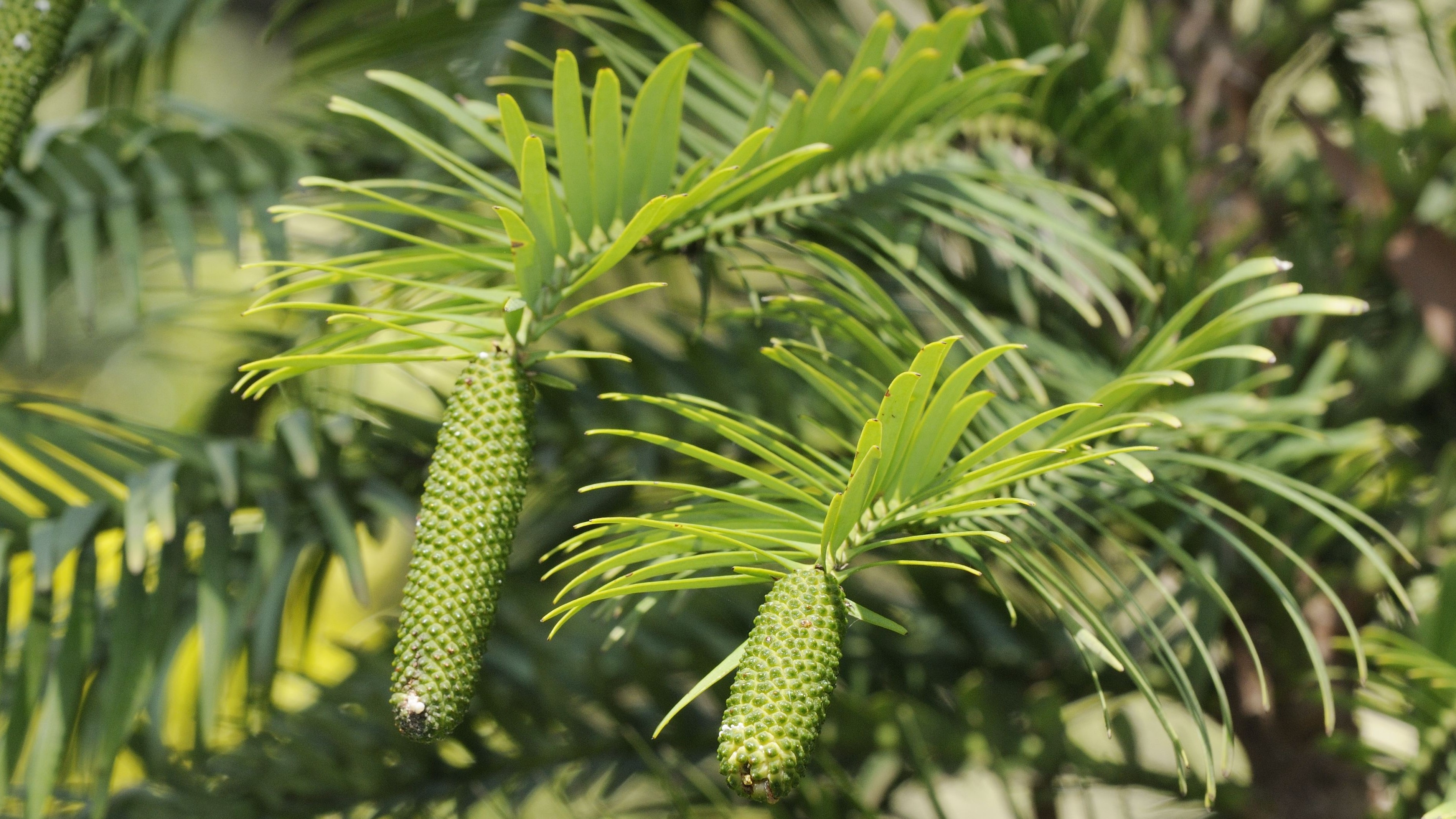
Wollemia nobilis is a tall evergreen coniferous tree reaching up to 130 feet (40 m) in height, with a trunk diameter of around 4 feet (1.2 m). On maturing trunks over 10 years old the bark is distinctively knobbly and has been described as resembling bubbling chocolate. The tree’s unique branching habit means that it never produces lateral branches from the main framework of branches growing off the trunk.
Like its cousin the monkey puzzle, the foliage is arranged spirally and the leaves are flattened in two or four ranks, making it easy to identify. During dormancy in winter, the terminal buds are covered in a white resin known as a “polar cap,” which protects the growing tips from damage by cold temperatures. This is thought to be one reason why this tree survived the ice ages. Once spring arrives the fresh, soft, lime-green foliage breaks through the cap and begins to grow, gradually becoming a mature blue-green.
Two more small groves of Wollemi pine have been located since the original discovery, though fewer than 100 mature specimens remain. Most have multiple trunks growing from the base, with some trees having up to a hundred. This system of natural coppicing may have evolved as a defense against fire and rock falls in the steep gorges where the tree naturally grows, also ensuring its survival into the present day.

However, it is also possible therefore that the trees are clonal, and it has been shown that there is very little genetic variation between individuals.
Classified as critically endangered, the Wollemi pine is now protected in Australia and anyone found venturing into the remote canyon, the exact location of which is kept secret, will be prosecuted. This penalty has been implemented to prevent the introduction of a plant disease, an aggressive water mould (Phytophthora cinnamomi), which can cause huge environmental damage to fragile plant populations when introduced on people’s footwear.
As part of the conservation strategy for the tree, young plants have been cultivated and distributed or sold around the world. In the Mount Tomah Botanic Gardens in the Blue Mountains, an established planting of Wollemi pines grows in a fenced valley that mimics the trees’ natural home and safeguards the gene pool of this botanically fascinating tree. The Wollemi pine can rightly be called the dinosaur of the tree world and a living link to an ancient time. Perhaps if we had followed the Aboriginal meaning of the word wollemi, we might have rediscovered it a lot sooner.
Coco de mer
Lodoicea maldivica
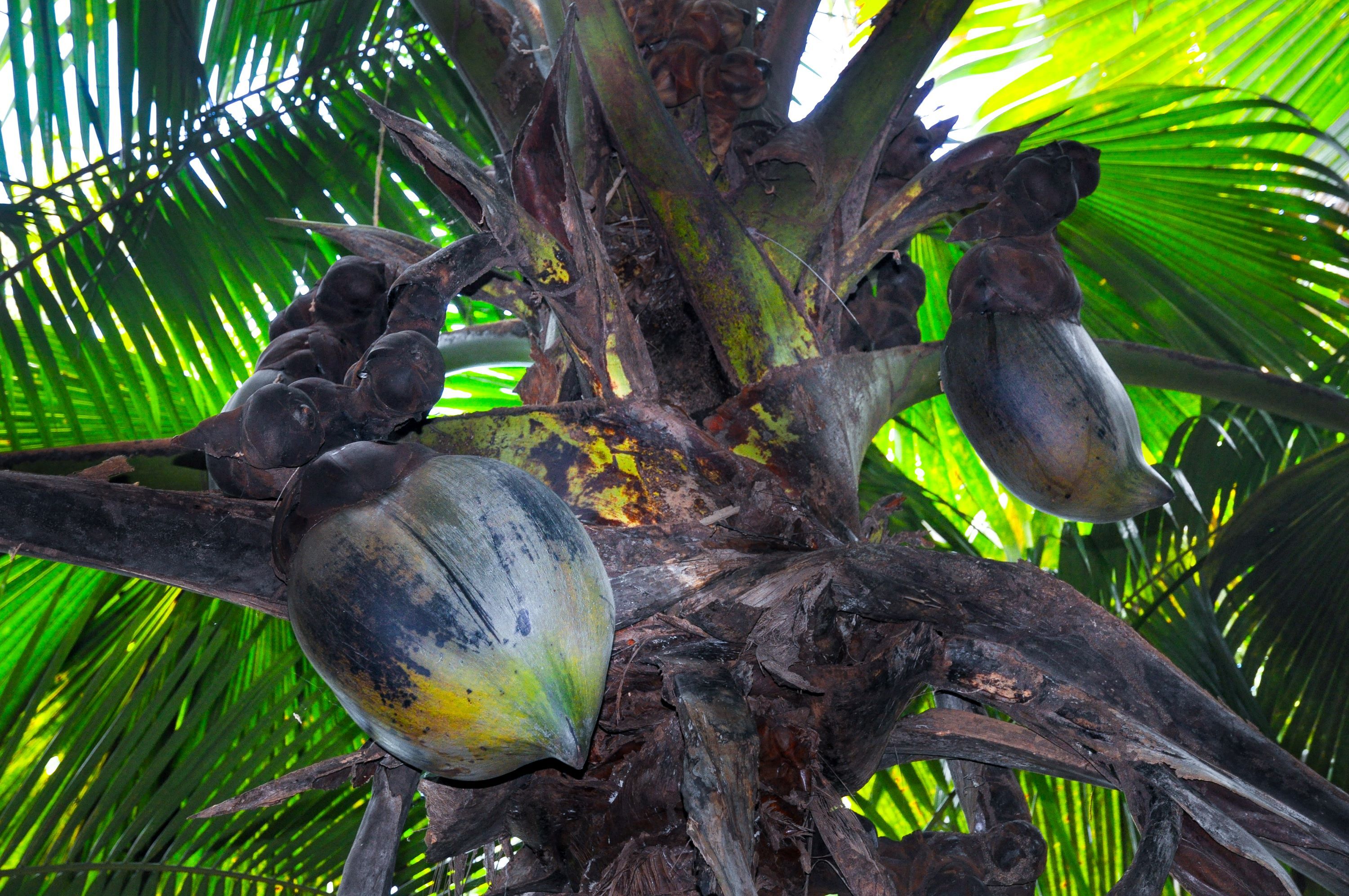
Endemic to just two tiny islands in the Seychelles, the extraordinary coco de mer palm can only be found in the wild in a handful of locations on Praslin and Curieuse. The palms can grow to between 82 and 165 feet (25 and 50 m) tall, with huge, pleated, fan-shaped leaves up to 33 feet (10 m) long. Its record-breaking fruits can weigh up to 88 pounds (40 kilograms) and measure 1.6 feet (0.5 m) across, and these contain the world’s largest and heaviest seed.
These curious palms were once the stuff of myth and legend. Sailors believed they grew underwater at the bottom of the Indian Ocean, and it was thought that male trees uprooted themselves on stormy nights and walked to find female trees, embracing them to pollinate their large flowers. People unlucky enough to witness such an event might go blind or even die.
“Coco de mer” is French for coconut of the sea and the name possibly arose from people having seen the huge seeds washed up on beaches or floating in the surf, although the fruit is heavier than water and seeds may float only when completely dried and empty. Also known as double coconuts, their rarity and suggestive rounded shape once made the seeds highly sought after and a valuable collector’s item.
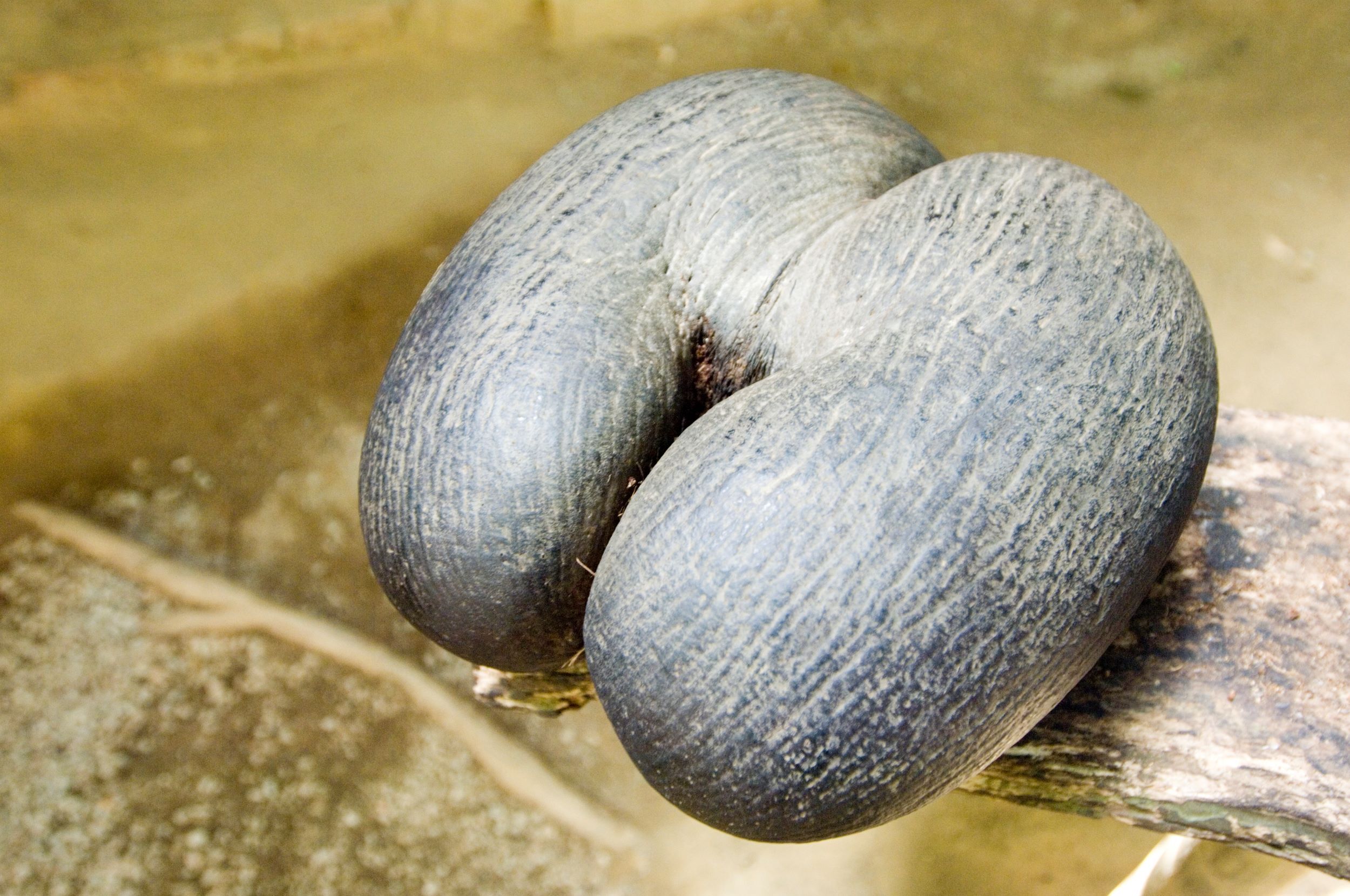
Royalty and nobility prized them in their cabinets of curiosities, often elaborately mounting them in gold. Trade in the seeds is now closely controlled and they can only be sold with a permit, although illegal collecting is a problem.
Although the coco de mer has been extensively studied, it still guards some mysteries and secrets. It is thought that the sheer size of the fruit and the seed it contains is a result of the geographic isolation of this palm — known as island gigantism. Normally a parent plant’s strategy would be for its seeds to be dispersed a fair distance away, by the wind or an animal, so that offspring are not in direct competition for light and nutrients. But these seeds are so heavy that they fall close by and grow in the shade of their parent.
In fact the soil here also contains more nutrition than further away, as the fan-shaped leaves of the mature palm are extremely effective at channelling water and accompanying nutrients down the trunk to the soil at the base. As a result, stands of coco de mer occur and they are usually the dominant species in the forests where they grow.
It is still not understood exactly how the pollen from the 5-foot (1.5 m) long “catkins” of male trees is transferred to the flowers of the female trees, the largest female inflorescence of any palm. Some believe bees are the agents, others think lizards may be involved. The seeds can take six or seven years to ripen before falling, and then more time elapses before the cotyledon — the sprouting shoot — emerges. At around 13 feet (4 m) in length this is longest known. This rope-like shoot, fed by the nutrient-packed seed, helps the new plant find the best spot to set down its roots.
This extraordinary palm is now under threat from harvesting, fires, introduced pests and human development. Although palms have been planted on a few islands near those where it grows naturally, the total population consists of only around 8,000 individuals, making this botanical phenomenon an endangered species.
Extracted from “Remarkable Trees” by Christina Harrison and Tony Kirkham, published by Thames & Hudson.


/static.texastribune.org/media/files/f5fdb1dff4d6fd788cba66ebaefe08d0/Paxton_GOP_Convention_2018_BD_TT.jpg)






